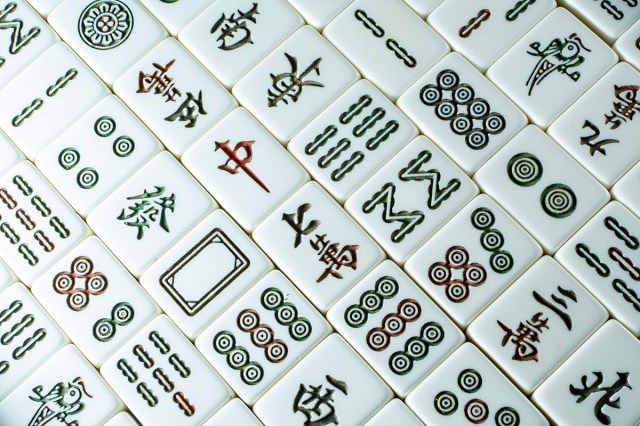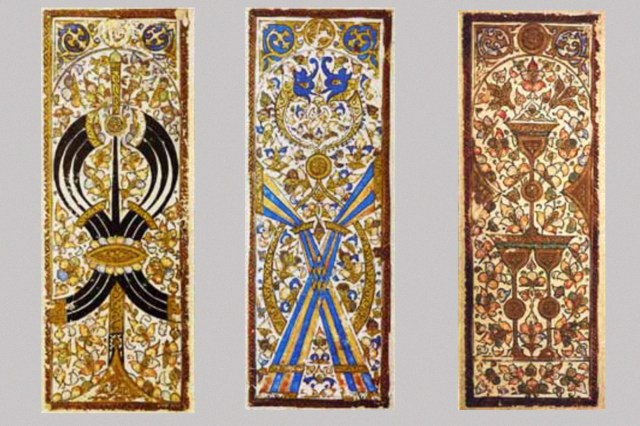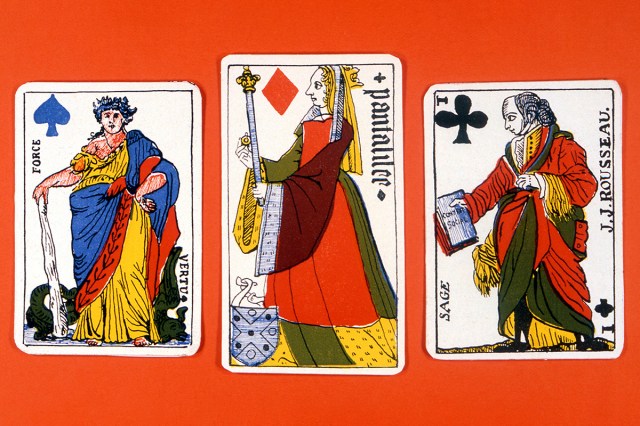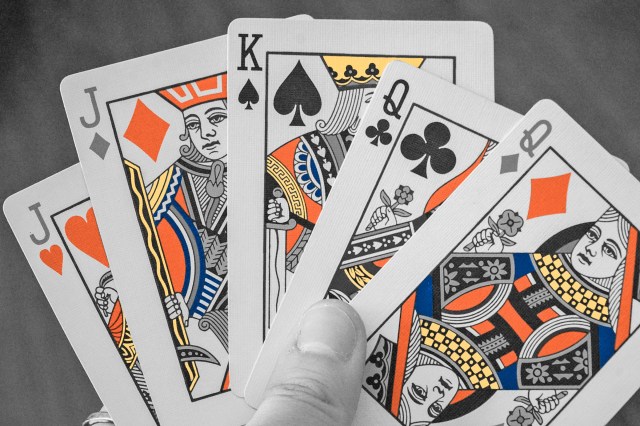
Ancient Origins
The earliest known written reference to playing cards is found in Chinese literature from the 10th century, though there are no details about card markings or the particular games played. In The Invention of Printing in China and Its Spread Westward, author Thomas Francis Carter notes that playing cards likely originated in China around the same time as paged books, writing, “As the advent of printing made it more convenient to produce and use books in the form of pages, so was it easier to produce cards.”
Carter goes on to explain how these cards, known as “sheet-dice,” began to appear before the end of the Tang dynasty, which ruled China from 618 to 907 CE. He also suggests the possibility that “sheet-dice” evolved in two different directions during the Song dynasty (960-1279 CE). Some were eventually made using bone or ivory and developed into games such as mahjong, while others retained their paper form, were embellished with new and more intricate images and designs, and became the true ancestors of modern playing cards.

Playing Cards Take Shape
As trade routes expanded during the Song dynasty, early playing cards began to spread westward along the Silk Road, carrying with them the fundamental concepts that evolved into the decks we recognize today. The most important stage on this journey happened in the Islamic world. By the 14th century, playing cards had reached the Mamluk Sultanate, which controlled Egypt and parts of the Middle East, at which point the cards underwent a significant transformation.
Thanks in part to the discovery of one particular set of cards from the 1400s, we can see how card design progressed toward something simil (440ar to modern decks. The Mamluk pack, as it is sometimes referred to, was discovered in 1931 in Istanbul’s Topkapi Palace Museum. The deck is divided into four suits, with 13 cards per suit. It has just 47 cards, but if it were complete, it would have contained 52 cards, just like today.
The design of this centuries-old deck is also surprisingly similar to the packs of cards we use today. The cards feature a symbol for each of the four suits: cups, coins, swords, and polo sticks, which reflect the culture and interests of the Islamic aristocracy. And each suit contains 10 numbered cards as well as three court cards: the king (malik), the viceroy or deputy king (naib), and the second deputy (naib thani).

Origins of the Four Modern Suits
Playing cards made their way to Europe in the late 14th century. Some theories suggest they were brought back by returning Crusaders, which is possible, although scant supporting evidence exists. It’s more likely they came through trade with the Islamic world, including with the Mamluks.
Thanks to written accounts from Spain, France, and Switzerland, we do know that playing cards grew in popularity in Europe from 1370 to 1400, although standardization was still a long way off. During the 15th century, European decks sometimes contained five rather than four suits, and specific regional tastes meant that different suit motifs also emerged. Germans, for example, used hearts, acorns, bells, and leaves, while the Italians favored cups, swords, batons, and coins.
It was the French, however, who made perhaps the most significant contribution to modern playing card design. In the late 1400s, they adapted the German suits to create pique, coeur, carreau, and trèfle — known in English as spades, hearts, diamonds, and clubs.
French card makers also simplified the production process by using stencils and developing more efficient printing techniques, making cards more affordable and widely available. This helped popularize the design in Europe, and the colonial exploits of the French, Spanish, and British introduced the newly standardized playing cards to the rest of the world.










